 W
WThe history of the Philippines from 1898 to 1946 describes the period of the American colonialization of the Philippines. It began with the outbreak of the Spanish–American War in April 1898, when the Philippines was still a colony of the Spanish East Indies, and concluded when the United States formally recognized the independence of the Republic of the Philippines on July 4, 1946.
 W
WThe elections for the House of Representatives of the Philippines were held on November 11, 1941, with the ruling Nacionalista Party retaining a majority of the seats. Still, the party was prevented a clean sweep when three independents were elected. The elected congressmen were supposed to serve from December 30, 1941 to December 30, 1945, but World War II broke out and Imperial Japan invaded the Philippines on December 8, 1941, setting up a puppet Second Philippine Republic which then organized the National Assembly of the Second Philippine Republic, whose members were elected in 1943.
 W
WA black legend is a historiographical phenomenon in which a sustained trend in historical writing of biased reporting and introduction of fabricated, exaggerated and/or decontextualized facts is directed against particular persons, nations or institutions with the intention of creating a distorted and uniquely inhuman image of them while hiding their positive contributions to history. The term was first used by French writer Arthur Lévy in his 1893 work Napoléon Intime, in contrast to the expression "Golden Legend" that had been in circulation around Europe since the publication of a book of that name during the Middle Ages.
 W
WThe Black Legend, or the Spanish Black Legend, is a theorised historiographical tendency consisting of anti-Spanish and anti-Catholic propaganda. Its proponents claim that its roots date back to the 16th century, when it was originally a political and psychological weapon that was allegedly used by Spain's northern European rivals in order to demonize the Spanish Empire, its people and culture, minimize Spanish discoveries and achievements, and counter its influence and power in world affairs.
 W
WThe Central Philippine University College of Engineering, also referred to as CPU COE, CPU College of Engineering or CPU Engineering, is one of the academic units of Central Philippine University, a private university in Iloilo City, Philippines. Founded in 1936 during the American presidency of Central, Harland F. Stuart, it is one of the oldest engineering schools in the Philippines founded by the Americans. It later changed its status to a full college when Central Philippine College became a university in 1953.
 W
WThe Central Philippine University College of Nursing, also referred to as CPU CON, CPU College of Nursing, CPU Nursing, is one of the academic units of Central Philippine University, a private university in Iloilo City, Philippines. Founded in 1906 as Union Mission Hospital Training School for Nurses, it is the first School of Nursing in the Philippines.
 W
WThe Central Philippine University College of Theology, also referred to as the CPU COT, CPU College of Theology or CPU Theology, is the theological seminary and one of the academic units of Central Philippine University, a private university in Iloilo City, Philippines. Founded in 1905 as the Bible School for the training of men Christian workers and missionaries through a grant of the American industrialist and Northern Baptist, John D. Rockefeller, it is the oldest college and academic unit of Central Philippine University and the first and oldest Baptist theological seminary in the Philippines.
 W
WThe second USC&GS Fathomer was a steamer that served as a survey ship in the United States Coast and Geodetic Survey from 1905 to 1942.
 W
WWendell Fertig was an American civil engineer, in the American-administered Commonwealth of the Philippines, who organized and commanded an American-Filipino guerrilla force on the Japanese-occupied, southern Philippine island of Mindanao during World War II.
 W
WStanley Hamer Ford was a United States Army General. He was prominent as commander of the Philippine Department, 1st Infantry Division, Seventh Corps Area, Sixth Corps Area, and the Second United States Army.
 W
WEugene Allen Gilmore was Vice Governor-General of the Philippine Islands from 1922 to 1929, serving twice as acting Governor-General of the Philippines in 1927 and again in 1929; the Dean of the College of Law at the University of Iowa from 1930 to 1934; the twelfth President of the University of Iowa from 1934 to 1940; and the law dean at the University of Pittsburgh School of Law from 1940 to 1942.
 W
WThe history of Filipino Americans begins in the 16th century when Filipinos first arrived in what is now the United States. The first Filipinos came to what is now the United States due to the Philippines being part of New Spain. Until the 19th century, the Philippines continued to be geographically isolated from the rest of New Spain in the Americas, but maintained regular communication across the Pacific Ocean via the Manila galleon. Filipino seamen in the Americas settled in Louisiana, and Alta California, beginning in the 18th century. By the 19th century, Filipinos were living in the United States, fighting in the Battle of New Orleans and the American Civil War, with the first Filipino becoming a naturalized citizen of the United States before its end. In the final years of the 19th century, the United States went to war with Spain, ultimately annexing the Philippine Islands from Spain. Due to this the History of the Philippines merged with that of the United States, beginning with the three-year long Philippine–American War (1899-1902), which resulted in the defeat of the First Philippine Republic, and the attempted Americanization of the Philippines.
 W
WJohn Adley Hull was a Judge Advocate General in the U.S. Army and an associate justice of the Supreme Court of the Philippines.
 W
WThe Iloilo Mission Hospital, commonly referred to as Mission Hospital, Mission, CPU–IMH or IMH, is a private tertiary, academic and teaching hospital located in Jaro, Iloilo City, Philippines. Established in 1901 through the auspices of the Presbyterian Foreign Mission Board from the United States by the American missionary doctor, Joseph Andrew Hall, it is the "first and oldest American and Protestant founded hospital in the Philippines". It was originally named as Sabine Haines Memorial Union Mission Hospital in memory of Charles Haines's son, a New Yorker whose grant made possible for the founding of the hospital.
 W
WIn Our Image: America's Empire in the Philippines is a 1989 book by American journalist Stanley Karnow, published by Random House. The book details the Philippine–American War (1899–1902) and the subsequent American occupation of the islands. Karnow described the book as "the story of America's only major colonial experience. How did we perform? What did we do there? What have we left there?" Karnow made six trips to the Philippines for research while writing the book, and also drew heavily on archives.
 W
WThe Japanese occupation of the Philippines occurred between 1942 and 1945, when Imperial Japan occupied the Commonwealth of the Philippines during World War II.
 W
WThe Jaro Evangelical Church is the first and oldest Baptist congregation in the Philippines. The church was established in 1900 by Eric Lund, a Swedish Baptist missionary working under the auspices of the American Baptist Foreign Mission Society, the foreign mission arm of the present day American Baptist Churches USA.
 W
WThe Jones Law was an Organic Act passed by the United States Congress. The law replaced the Philippine Organic Act of 1902 and acted as a constitution of the Philippines from its enactment until 1934, when the Tydings–McDuffie Act was passed. The Jones Law created the first fully elected Philippine legislature.
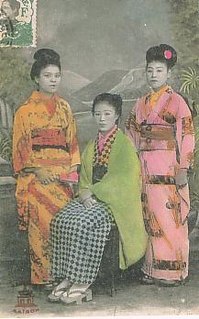 W
WKarayuki-san (唐行きさん) was the name given to Japanese girls and women in the late 19th and early 20th centuries who were trafficked from poverty-stricken agricultural prefectures in Japan to destinations in East Asia, Southeast Asia, Siberia, Manchuria, British India, and Kalgoorlie, Australia, to serve as prostitutes.
 W
WGeorge Arthur Malcolm was an American lawyer who emerged as an influential figure in the development of the practice of law in the Philippines in the 20th century. At age 35, he was appointed Associate Justice of the Supreme Court of the Philippines, where he would serve for 19 years. His most enduring legacy perhaps lies in his role in the establishment of the College of Law at the University of the Philippines.
 W
WUSC&GS Marinduque was a steamer, owned by the Philippine Insular Government, that served exclusively in the Philippines. The ship was purchased by the Philippine Bureau of Coast Guard and Transportation to support both government logistical and administrative travel needs as well as the usual functions of a coast guard vessel. The vessel was transferred to the United States Coast and Geodetic Survey serving as a survey ship from 1905 to 1932. Marinduque and Romblon were sister ships, both built in Japan.
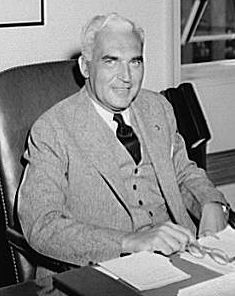 W
WPaul Vories McNutt was an American diplomat and politician who served as the 34th governor of Indiana, high commissioner to the Philippines, administrator of the Federal Security Agency, chairman of the War Manpower Commission and ambassador to the Philippines.
 W
WThe Moro Rebellion (1899–1913) was an armed conflict between the Moro people and the United States military during the Philippine–American War.
 W
WCharles Thomas "Chick" Parsons Jr. was a businessman, diplomat, and decorated World War II veteran.
 W
WThe first USC&GSS Pathfinder, also noted in some NOAA histories as "old Pathfinder", was a United States Coast and Geodetic Survey ship in service from 1899 to 1941, when she was beached in sinking condition on January 30, 1942, after 40 years service in the Philippines.
 W
WDatu Salipada Khalid Pendatun was a Filipino lawyer, military officer, and a statesman, being the first Filipino Muslim in history to hold these offices. He died on January 27, 1985 in Quezon City.
 W
WThe Philippine Constabulary Band was the principal military band of the Philippine Constabulary, and later, as the Philippine Army Orchestra, of the Army of the Commonwealth of the Philippines. Between its establishment in 1901 and dissolution during World War II, it registered a reputation for musical excellence both in the Philippines and the United States, and is credited with being the first band other than the United States Marine Band to provide the musical escort to the President of the United States during a U.S. presidential inauguration. The Philippine Army Band considers itself the successor to the Philippine Constabulary Band.
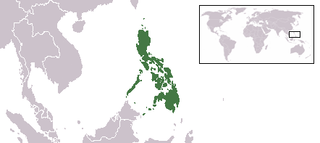 W
WThe Philippine Executive Commission was a provisional government set up to govern the Philippine archipelago during World War II. It was established with sanction from the occupying Imperial Japanese forces as an interim governing body prior to the establishment of the Japanese-sponsored and nominally independent, Second Philippine Republic.
 W
WThe Philippine Organic Act was a basic law for the Insular Government that was enacted by the United States Congress on July 1, 1902. It is also known as the Philippine Bill of 1902 and the Cooper Act, after its author Henry A. Cooper. The approval of the act coincided with the official end of the Philippine–American War.
 W
WThe Philippine Scouts was a military organization of the United States Army from 1901 until after the end of World War II. These troops were generally Filipinos and Filipino-Americans assigned to the United States Army Philippine Department, under the command of American commissioned officers. Philippine Scout units were given the suffix "(PS)", to distinguish them from other U.S. Army units.
 W
WThe Philippine–American War, also referred to as the Filipino–American War, the Philippine War, the Philippine Insurrection or the Tagalog Insurgency, was an armed conflict between the First Philippine Republic and the United States that lasted from February 4, 1899 to July 2, 1902. While Filipino nationalists viewed the conflict as a continuation of the struggle for independence that began in 1896 with the Philippine Revolution, the U.S. government regarded it as an insurrection. The conflict arose when the First Philippine Republic objected to the terms of the Treaty of Paris under which the United States took possession of the Philippines from Spain, ending the Spanish–American War.
 W
WThe Commonwealth of the Philippines was the administrative body that governed the Philippines from 1935 to 1946, aside from a period of exile in the Second World War from 1942 to 1945 when Japan occupied the country. It replaced the Insular Government, a United States territorial government, and was established by the Tydings–McDuffie Act. The Commonwealth was designed as a transitional administration in preparation for the country's full achievement of independence. Its foreign affairs remained managed by the United States.
 W
WThe Government in exile of the Commonwealth of the Philippines was a continuation of the Government of the Commonwealth of the Philippines after they had been evacuated from the Philippines during the Second World War. The Commonwealth of the Philippines was self-governing, although under the ultimate control of the United States.
 W
WWilliam Hayes Pope was the last Chief Justice of New Mexico Territory and the first United States District Judge of the United States District Court for the District of New Mexico after New Mexico attained statehood.
 W
WQ-111 Luzon was a motor torpedo boat of the United States Army during World War II as part of the Offshore Patrol based at Manila.
 W
WManuel Luis Quezon y Molina, also referred to by his initials MLQ, was a Filipino statesman, soldier and politician who served as president of the Commonwealth of the Philippines from 1935 to 1944. He was the first Filipino to head a government of the entire Philippines, and is considered to have been the second president of the Philippines, after Emilio Aguinaldo (1899–1901).
 W
WThe Rescission Act of 1946 is a law of the United States that retroactively annulled benefits that would have been payable to Filipino troops on account of their military service under the auspices of the United States during the time that the Philippines was a U.S. unincorporated territory and Filipinos were U.S. nationals.
 W
WUSC&GSS Research was a survey vessel owned by the Philippine Insular Government to be the first vessel operated by the United States Coast and Geodetic Survey in the Philippines from 1901 until 1918.
 W
WUSC&GS Romblon was a steamer, owned by the Philippine Insular Government, that served exclusively in the Philippines. The ship was purchased by the Philippine Bureau of Coast Guard and Transportation to support both government logistical and administrative travel needs as well as the usual functions of a coast guard vessel. The vessel was transferred to the United States Coast and Geodetic Survey serving as a survey ship from 1905 to 1932. Romblon and Marinduque were sister ships, both built in Japan.
 W
WJosé Emeterio Muñoz Romero Sr., commonly known as José E. Romero, was a statesman and diplomat from the Philippines. He represented Negros Oriental's Second District and was Majority Floor Leader during the Ninth and Tenth Philippine Legislatures and the First and Second National Assemblies of the Philippines. He was senator-elect of the First Congress of the Philippines and later became the first Philippine ambassador to the United Kingdom and Secretary of Education.
 W
WThe Rose Memorial Auditorium is a large multi-purpose theater (auditorium) on the campus of Central Philippine University in Jaro, Iloilo City. Rose is the largest auditorium in Western Visayas with a seating capacity of 4000 and has hosted over know international and local concerts, conventions and events from known from music groups and singers, and as well as conventions and summits of known public servants and organizations.
 W
WThe Philippine Sakdalista movement was founded by the writer Benigno Ramos in 1930. The name of the movement is derived from the Tagalog word "Sakdal", which means "to accuse" and a nod to the J'Accuse…! editorial of the French novelist Emile Zola. The movement’s platform was centered upon immediate independence, estate redistribution, taxation reductions, and greater governmental transparency. The movement lasted until 1935, when the Sakdalista leaders organized an active uprising that quickly failed, causing the party to dissolve. The movement is estimated to have had 20,000 formal members that influenced hundreds of thousands of Filipinos in the early 1930s.
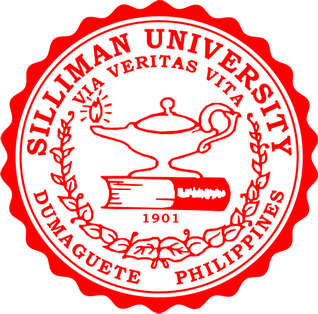 W
WSilliman University is a private research university in Dumaguete, Negros Oriental, the Philippines. Established in 1901 as Silliman Institute by the Presbyterian Board of Foreign Missions, it is the first American and Protestant founded institution of higher learning in the Philippines.
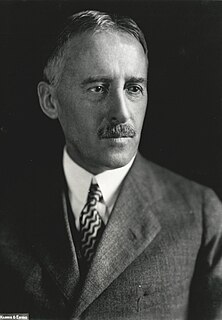 W
WHenry Lewis Stimson was an American statesman, lawyer, and Republican Party politician. Over his long career, he emerged as a leading figure in U.S. foreign policy by serving in both Republican and Democratic administrations. He served as Secretary of War (1911–1913) under President William Howard Taft, Secretary of State (1929–1933) under President Herbert Hoover, and Secretary of War (1940–1945) under Presidents Franklin D. Roosevelt and Harry S. Truman.
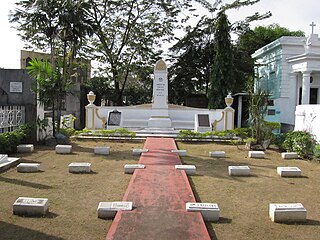 W
WThe Thomasites were a group of 600 American teachers who travelled from the United States to the newly occupied territory of the Philippines on the transport ship USS Thomas. The group included 346 men and 180 women, hailing from 43 different states and 193 colleges, universities, and normal schools. The term 'Thomasites' has since expanded to include any teacher who arrived in the first few years of the American colonial period of the Philippines.
 W
WThe Treaty of Manila of 1946, formally the Treaty of General Relations and Protocol, is a treaty of general relations signed on July 4, 1946 in Manila, the capital of the Philippines. It relinquished U.S. sovereignty over the Philippines and recognized the independence of the Republic of the Philippines. The treaty was signed by High Commissioner Paul V. McNutt as representative of the United States and President Manuel Roxas as representative of the Philippines.
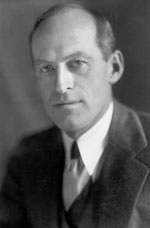 W
WThe Tydings–McDuffie Act, officially the Philippine Independence Act, is a United States federal law that established the process for the Philippines, then an American colony, to become an independent country after a ten-year transition period. Under the act, the 1935 Constitution of the Philippines was written and the Commonwealth of the Philippines was established, with the first directly elected President of the Philippines. It also established limitations on Filipino immigration to the United States.
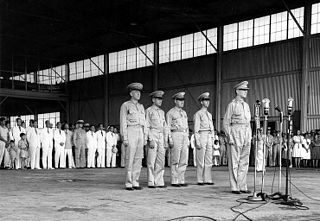 W
WUnited States Army Forces in the Far East (USAFFE) was a military formation of the United States Army active from 1941 to 1946. The new command's headquarters was created on 26 July 1941, at No. 1, Calle Victoria, Manila, Luzon, the Philippines, with General Douglas MacArthur as commander. The Chief of Staff was Brigadier General Richard K. Sutherland and the Deputy Chief of Staff was Lieutenant Colonel Richard J. Marshall. The core of this command was drawn from the Office of the Military Advisor to the Commonwealth Government.
 W
WThe United States Asiatic Fleet was a fleet of the United States Navy during much of the first half of the 20th century. Before World War II, the fleet patrolled the Philippine Islands. Much of the fleet was destroyed by the Japanese by February 1942, after which it was dissolved and incorporated into the naval component of the South West Pacific Area command, which eventually became the Seventh Fleet.
 W
WThe Central Philippine University Church, commonly referred as University Church, UC or CPU Church, is a Protestant church located at the main campus of the Central Philippine University in Jaro District, Iloilo City, Philippines. Founded in 1913 by the missionaries under the auspices of the American Baptist Foreign Mission Society, the present church structure was built and completed in 1970 under the chaplaincy of Kenneth Losh, an American Baptist missionary. The church which is notable for its Malay architectural style, is a famous landmark in Iloilo City.
 W
WWest Visayas State University is a public normal research university located in La Paz, Iloilo City, Western Visayas region of the Philippines. It was established in 1924 as Iloilo Normal School under the tutelage of the Thomasites, but dates back its founding in 1902 as a part of Philippine normal school system with Iloilo National High School established by the American colonial government. It later became West Visayas State College in 1965 and acquired its university status becoming West Visayas State University in 1986.
 W
W"The White Man's Burden: The United States and the Philippine Islands" (1899), by Rudyard Kipling, is a poem about the Philippine–American War (1899–1902), which exhorts the United States to assume colonial control of the Filipino people and their country. Originally written to celebrate the Diamond Jubilee of Queen Victoria, the jingoistic poem was replaced with the sombre "Recessional" (1897), also a Kipling poem about empire.
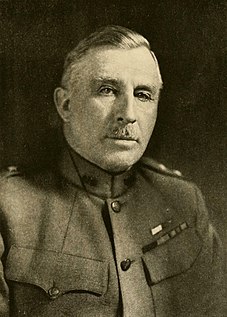 W
WLeonard Wood was a United States Army major general, physician, and public official. He served as the Chief of Staff of the United States Army, Military Governor of Cuba, and Governor General of the Philippines. He began his military career as an army doctor on the frontier, where he received the Medal of Honor. During the Spanish–American War, he commanded the Rough Riders, with Theodore Roosevelt as his second-in-command. Wood was bypassed for a major command in World War I, but then became a prominent Republican Party leader and a leading candidate for the 1920 presidential nomination.
 W
WCharles Emmett Yeater of Sedalia, Missouri was acting Governor-General of the Philippines from March 5, 1921 to October 14, 1921.
 W
WRichard Whitehead Young was a U.S. Army Brigadier General and an Associate Justice of the Supreme Court of the Philippines during the time that the Philippines was a U.S. Territory.